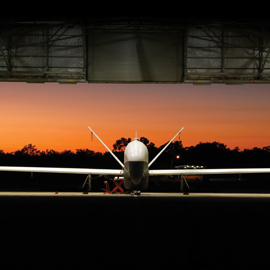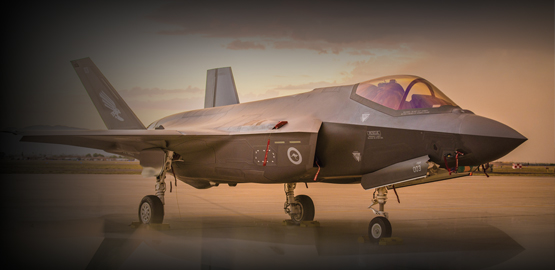President Biden has announced the withdrawal of all U.S. troops from Afghanistan by September 11, 2021—the twentieth anniversary of the terrorist attacks that prompted the U.S. intervention in the first place. The decision is not “conditions based,” so no amount of violence by the Taliban is likely to reverse it. In fact, that is the entire point—the president believes a conditions-based approach is “a recipe for staying in Afghanistan forever.” Ending the “endless wars” appears to be as pressing a priority for Biden as it was for Trump. In this respect, as Eliot Cohen has noted, “the Biden administration is really the Trump administration but with civilized manners.”
There’s much more that can be said about the decision and the process (or lack thereof) behind it. But given how unlikely the decision is to be reversed, it is worth considering what will happen to Afghanistan after the last American troops leave.
After the U.S. withdrawal, Afghanistan will likely become the world’s prime ungoverned space. The timing of the withdrawal announcement coincided with the release of the annual Director of National Intelligence Global Threat Assessment, which concluded that after a U.S. and allied withdrawal, Afghanistan will again descend into civil war, the result of which could be that the Taliban will again rule in Kabul. The assessment also suggests that the prospects for a negotiated settlement were “low” and that the “Taliban is likely to make gains on the battlefield, and the Afghan Government will struggle to hold the Taliban at bay if the coalition withdraws support.” The potential humanitarian disaster and undoing of hard won gains, including for women’s rights, loom as dark consequences.
The repercussions of chaos in Afghanistan will be felt globally. Like the American withdrawal from Vietnam, Biden’s decision will be seen as a sign of weakness, encouraging Russia, China, Iran, and other adversaries to challenge U.S. interests. It will also be a victory for violent Islamist extremists around the world. After all, it was the initial U.S. abandonment of Afghanistan after the Soviet withdrawal that initially enabled al Qaeda to create a base of operations there. As the DNI assessment notes, despite sustaining serious losses in the past years, the al Qaeda leadership will continue “calls for attacks against the United States and other international targets and seek to advance plotting around the world. Al Qa‘ida’s regional affiliates will exploit local conflicts and ungoverned spaces to threaten U.S. and Western interests, as well as local governments and populations abroad.”
That is why the Congressionally mandated, bipartisan Afghanistan Study Group, co-chaired by former Chairman of the Joint Chiefs of Staff Joseph Dunford and former Sen. Kelly Ayotte,
was advised that a complete U.S. withdrawal without a peace agreement would allow these groups to gradually rebuild their capabilities in the Afghanistan-Pakistan region such that they might be able to attack the U.S. homeland within eighteen to thirty-six months. The Group, relying on its own collective judgments, agreed with this assessment. It also agreed that outside of Afghanistan, there are no practical alternative locations in the region from which to conduct effective U.S. counterterrorism operations against threats from Afghanistan. [Emphasis added.]
There has not been another 9/11 since 9/11—but that was never a guarantee.
The Afghanistan Study Group also touched—if glancingly—on the subject of nuclear terrorism. It noted that concerns “remain about the possibility of nuclear weapons falling into the hands of a terrorist organization. It is difficult to assess the probability of this happening, but the consequences would be deadly. The possibility of a terrorist nuclear attack on the United States could not be entirely ruled out.”
The group pointed out that the complex of jihadists factions that have battled U.S. and Afghan forces are intertwined with those that threaten the stability of South Asia—and, more specifically, those that threaten to spark a conflict between two nuclear-armed states, India and Pakistan. As their report observed, “any group that could increase the likelihood of nuclear conflict or the dispersal of nuclear materials and weapons in South Asia, especially to nonstate groups, could severely threaten regional stability, U.S. allies and interests, and even American territory.”
The report does not unspool this potential scenario in any detail, but it is not difficult to imagine how such a catastrophe could come to pass. The first and most likely step is that the U.S. and allied withdrawal leads to an intensified civil war in Afghanistan with the Taliban making territorial gains against the elected Afghan government. The result is a large-scale out-flow of refugees, mostly to Pakistan (it is worth recalling that in the 1980s and 1990s, the Afghan refugee population was the largest in the world). In Pakistan, the refugees become a fertile breeding ground for Islamist extremism, a useful pool of recruits for terrorist groups, and add enormous stresses to the already fragile Pakistani state.
The Pakistani government is already increasing its nuclear weapons capacity, including by scaling up its production of enriched uranium and plutonium. Unclassified estimates suggest it may already possess the world’s fifth-largest and fastest-growing nuclear arsenal. It currently possesses as many as 160 nuclear weapons, produces enough fissile material for up to 15 warheads per year, and could be on track to surpass the U.K.’s arsenal.
The Afghanistan-Pakistan border is over 1600 miles long, mountainous, and notoriously poorly governed on both sides. It also includes a portion of the Gilgit-Baltistan area of Pakistan that India claims as part of the larger Kashmir dispute.
Pakistani-sponsored jihadists executed a deadly attack in Mumbai in 2008. With more recruits among the Afghan refugee population and a favorable strategic posture vis-à-vis their Indian neighbors, they might be encouraged at some point in the months or years after the American withdrawal to execute multiple such attacks, which would be the next step toward nuclear terrorism. In response, India turns to its superior conventional forces as a means of reprisal. As Indian armored columns approach the Pakistani border, the Pakistani Army widely disperses its nuclear weapons, both to ensure their survivability against an Indian first strike, and to enable a blunting strike with short-range missiles to stop India from breaching the border and threatening the existence of the Pakistani state.
Suddenly, in the middle of a crisis or even an all-out war, hundreds of nuclear weapons are stationed in largely ungoverned areas with networks of radical Islamist militants. To experts who spend their time thinking (and worrying) about nuclear terrorism, this is the most feared scenario. And after September 11, 2021, the U.S. will not have the necessary military forces nearby capable of rapidly responding to the crisis that loose nuclear weapons would inevitably create. In that context President Bidenmight want to recall President Obama’s warningfive years ago that “The danger of a terrorist group obtaining and using a nuclear weapon is one of the greatest threats to global security.”



























